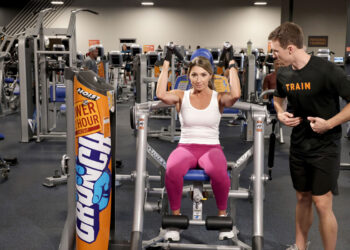We all know about obesity, we see obesity wherever we go. On our streets, in shopping malls, in restaurants, at ballparks, in our schools, there isn’t a place in America that obesity has not touched. Today, obesity has hit an all new record high and tomorrow, the record will be broken. Obesity, due to its debilitating and harmful physical side-effects, has been recategorized as a disease, not a social disorder. What I find alarming is society has deemed obesity as a fact of life, and society believes that people do not possess the ability to control their own destiny. And, we now have surgeries (Gastric Bypass, Liposuction and others) to help people deal with obesity by controlling how much food a person can consume or by suctioning out the adipose fat. Not to get too deep or philosophical about “free-will” and our right as humans to choose, but I believe it comes down to accepting responsibility for our actions.
For some unexplainable reason people have become oblivious to the term responsibility. Why do we seek others to blame for our actions or lack of action? The answer is because it is easier to place blame than too accept blame. To accept blame means it is your personal defect and lack of personal concern that is causing the obesity and eventually your demise and death.
As fitness professionals, you too have a responsibility – your responsibility is to educate and help those in need of fitness training. While most, if not all, of you agree with that statement, how many of you take a proactive approach? In other words, do you find time to engage people in conversation about physical fitness outside the health club? Or, do you participate in your local community’s health and fitness events? If you answered “yes” to one or both of the questions, you are not only a real fitness professional; you are an asset to your community. But, if you answered “no” to both questions, then it is time for you to look outside the health club for opportunities to make a positive influence in your community’s health and well-being. This is also a way for you to develop new members and revenues for the club.
I am going to lend you some of my knowledge on this matter. I have had the opportunity to be involved with several programs where obesity was the main focus. In all instances, empowerment of the participants is crucial. To emphasize responsibility is not enough. You must get the participants to affirm their culpability of their physical condition. Once people realize their actions have directly caused their obesity, they will be on their way to changing behaviors that caused their health problem. The second issue will be the thought of “instant gratification” that we all have. Participants will need to realize that they did not become obese overnight and they will not become fit and healthy overnight. This can be a significant road block in the psyche of the obese participant because change is difficult for anyone and especially for those whose comfort was on the couch with a bag of chips. Another issue will be to get the participants to start moving, not exercising, but moving. In other words, initially all you will want from them is activity – getting them off the couch and walking in the neighborhood, shopping mall or park. Once you have them moving, accepting responsibility and realizing a change in behavior and physical condition, you will be able to initialize a basic training protocol. I also suggest you require the participants to keep a journal on: all consumed foods and liquids; activity and exercise times, and body weight and measurements. In most cases the journal will be a difficult aspect of the program, but it is vital to the success of your participants. The journal will give you historical data and a way to review nutritional value and calories, but most importantly the journal is a way to keep an eye on the participants.
Another tool of which I am aware that can be utilized in your obesity program is a weight vest. The weight vest can be utilized as an intensifier in the daily activity and exercises, or as it was used in the TV Show “Biggest Loser” as a way to show the participants how much weight they have lost. You will also need to consider the families’ condition because in most cases, more than one person in the family will be obese – so there is an opportunity to recruit more participants.
In closing, I would like to say we too have a responsibility and it is our responsibility to help those that need educating and training when it comes to fitness, health and wellness.
George Morrison is the Developer of the Xvest and a Strength & Conditioning Coach. He can be contacted at 800.697.5658, or by email at info@thexvest.com, or visit www.thexvest.com.








